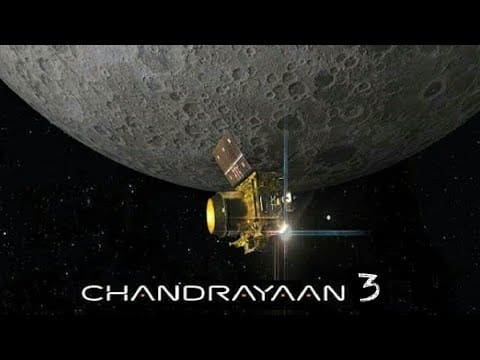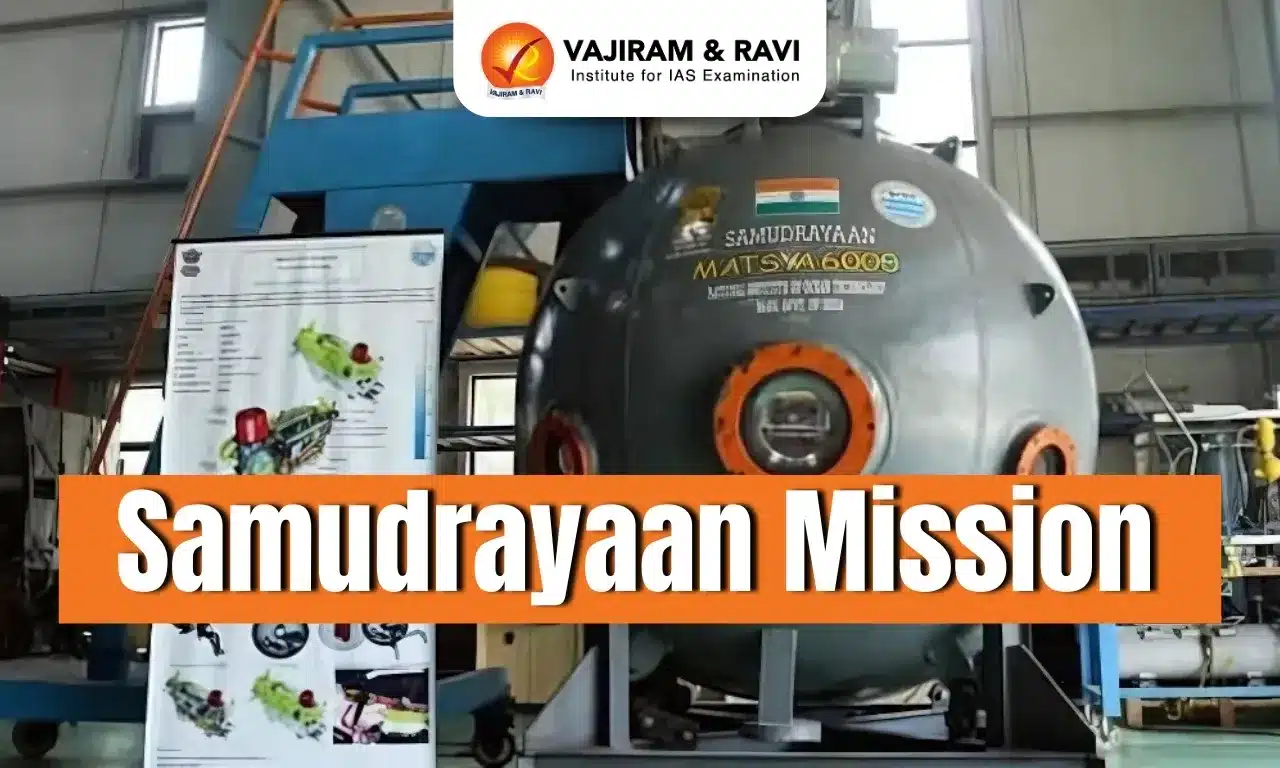What’s in Today’s Article?
- Why in News?
- The Chandrayaan-3 Mission
- Chandrayaan-3 Payloads
- How will the Mission be Implemented?
Why in News?
- The Indian Space Research Organisation (ISRO) plans to retain the names of the Chandrayaan-2 lander (Vikram) and rover (Pragyan) for their Chandrayaan-3 equivalents as well.
- Following Chandrayaan-2, where a last-minute glitch led to the failure of the lander’s (Vikram) soft landing attempt after a successful orbital insertion, another lunar mission (Chandrayaan-3) for demonstrating soft landing was proposed.
The Chandrayaan-3 Mission:
- Chandrayaan-3 (“mooncraft”) is a planned 3rd lunar exploration mission by the ISRO to demonstrate end-to-end capability in –
- Safe landing (through the lander Vikram – after Vikram Sarabhai, the father of the Indian space programme) and
- Roving (through the rover Pragyan) on the lunar surface.
- Unlike Chandrayaan-2, it will not have an orbiter and its propulsion module will behave like a communications relay satellite.
- Chandrayaan-3 interplanetary mission has three major modules: the Propulsion module, Lander module, and Rover.
- ISRO plans to launch the third moon mission in mid-July aboard the LVM3 (formerly GSLV Mk-III) rocket from Sriharikota.
Chandrayaan-3 Payloads:
- The propulsion module: It has Spectro-polarimetry of Habitable Planet Earth (SHAPE) payload to study the spectral and polarimetric measurements of Earth from lunar orbit.
- Lander payloads: It will have 4 payloads –
- Radio Anatomy of Moon Bound Hypersensitive ionosphere and Atmosphere (RAMBHA) to study the temporal evolution of electron density in the Lunar ionosphere.
- Chandra’s Surface Thermophysical Experiment (ChaSTE) to measure the thermal conductivity and temperature;
- Instrument for Lunar Seismic Activity (ILSA) for measuring the seismicity around the landing site;
- Langmuir Probe (LP) to estimate the plasma density and its variations.
- Rover payloads: Alpha Particle X-ray Spectrometer (APXS) and Laser Induced Breakdown Spectroscope (LIBS) for deriving the elemental composition in the vicinity of the landing site.
Image Caption: Difference between Chandrayaan-1 and Chandrayaan-2
How will the Mission be Implemented?
- A propulsion module will carry the lander-rover configuration to a 100-km lunar orbit.
- Once the ‘Vikram’ lander module makes it safely to the moon, it will deploy ‘Pragyan’.
- Pragyan will carry out in-situ chemical analysis of the lunar surface during the course of its mobility.
Q1) Who was Vikram Sarabhai?
Dr. Vikram Ambalal Sarabhai was an Indian physicist and astronomer who initiated space research and helped develop nuclear power in India. He is internationally regarded as the Father of the Indian Space Program.
Q2) What is GSLV Mk-III/LVM-3?
Geosynchronous Satellite Launch Vehicle Mark III/Launch Vehicle Mark-III is a 3-stage medium-lift launch vehicle developed by the ISRO. Primarily designed to launch communication satellites into geostationary orbit, it is also due to launch crewed missions under the Indian Human Spaceflight Programme (Gaganyaan).
Source: Chandrayaan-3 | Lander Vikram, rover Pragyan to return for another tryst with the moon
Last updated on August, 2025
→ UPSC Mains Question Paper 2025 is out for Essay, GS 1 & GS 2.
→ UPSC Mains GS 3 Question Paper 2025 is now out.
→ UPSC Mains GS 4 Question Paper 2025 is now out.
→ UPSC Mains 2025 will be conducted on 22nd August 2025.
→ UPSC Notification 2025 was released on 22nd January 2025.
→ UPSC Calendar 2026 is released on 15th May, 2025.
→ UPSC Prelims Question Paper 2025 and Unofficial Prelims Answer Key 2025 are available now.
→ UPSC Prelims Result 2025 is out now for the CSE held on 25 May 2025.
→ The UPSC Vacancy 2025 were released 1129, out of which 979 were for UPSC CSE and remaining 150 are for UPSC IFoS.
→ UPSC Prelims 2026 will be conducted on 24th May, 2026 & UPSC Mains 2026 will be conducted on 21st August 2026.
→ The UPSC Selection Process is of 3 stages-Prelims, Mains and Interview.
→ UPSC Result 2024 is released with latest UPSC Marksheet 2024. Check Now!
→ UPSC Toppers List 2024 is released now. Shakti Dubey is UPSC AIR 1 2024 Topper.
→ Also check Best IAS Coaching in Delhi















